
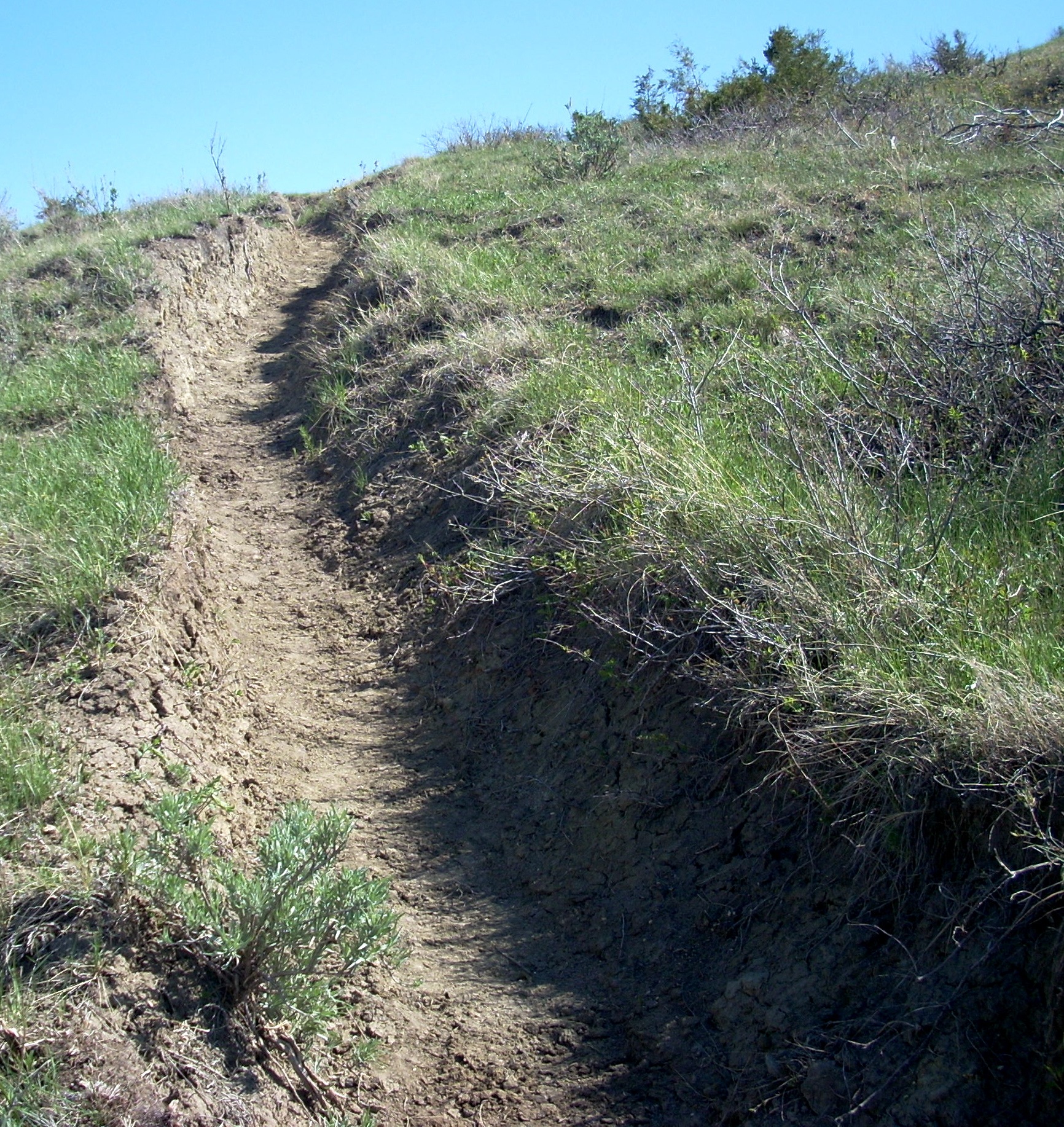
| Route 66 | Cities | Beaches |
 |
 |
| We recommend Paddock Creek as your first hike at Theodore Roosevelt. It is a sampler to the park in that all of the spectacular sights seen elsewhere are represented in smaller formations on this one day hike. And there are several ways to do it. You could combine Paddock and Talkington Creeks into an overnight loop, camping at the southeastern corner of the park, ideally at Southeast Corner Spring. If you only have one vehicle and don't want to pay for a shuttle, you could do it in two out and back day hikes, one coming down from the Painted Canyon Visitor Center to Scenic Loop Drive and back, the other coming up from Halliday Well Trailhead to that same Scenic Loop Drive crossing and back. We recommend starting from the visitor center and having someone pick you up. | 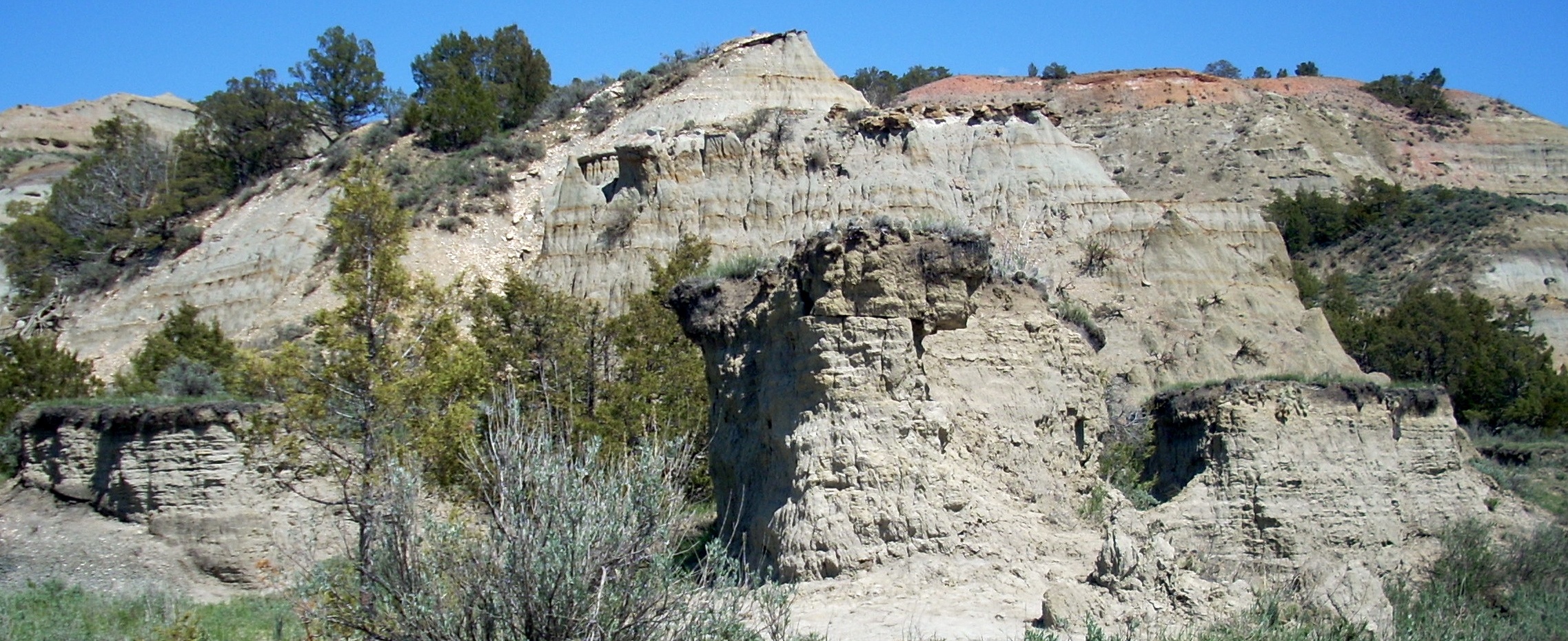 |
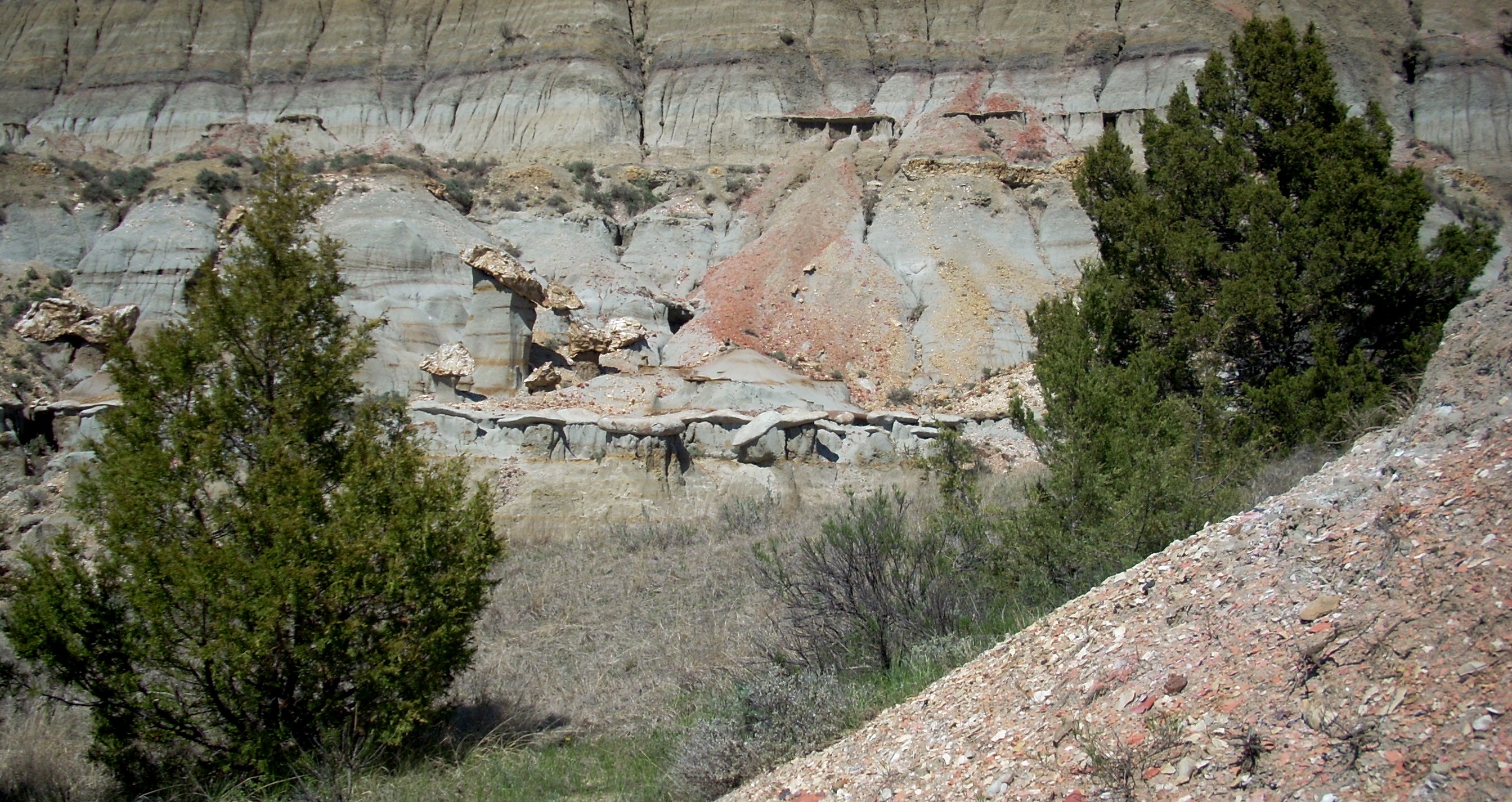 |
That gives you a 10 mile hike with the first two miles significantly downhill and the rest a steady but barely noticeable descent toward the Little Missouri River. Those two miles are on a spur trail which connects the visitor center, high on the plateau, to the Paddock Creek Trail down in the valley. You then turn left for the main hike. Even though this is mainly a geology hike, buffalo and wild horses graze between the cliffs, rocks and mud flats, you'll hike right through the middle of three prairie dog villages, and you'll see several of the brilliantly colored Mountain Bluebirds with their loud, clear, melodic song. Approach the prairie dog villages very quietly and watch carefully and you may see snakes, hawks, coyotes and wolves lurking about the periphery or even slinking about in the middle, looking for a quick dinner. |
| Especially as you descend the first two miles, notice all the stumps and sections of trunks from the petrified trees. The photo at right shows one of the stumps. These are from trees which were buried alive. They were growing in a Paleocene forest along the stream down in the valley. Bentonite mud from the slopes higher up oozed down around them, burying them alive where they stood, sealing them off from decay. The bigger of these trees were 140-200 feet tall. Once submerged in the mud, it took them about 100 years to petrify. It's a random process, so some of the trees are better preserved than others. You may be able to see rings, bark ridges and knots. But often those details are missing. The trees that were preserved long ago were coniferous cousins to our modern Sequoia. The stump in this photo is whitish gray, but many of them have blacks, reds or other colors. Those colors indicate various impurities, like carbon, iron, or manganese, which oozed through the mud while the petrification was occurring. | 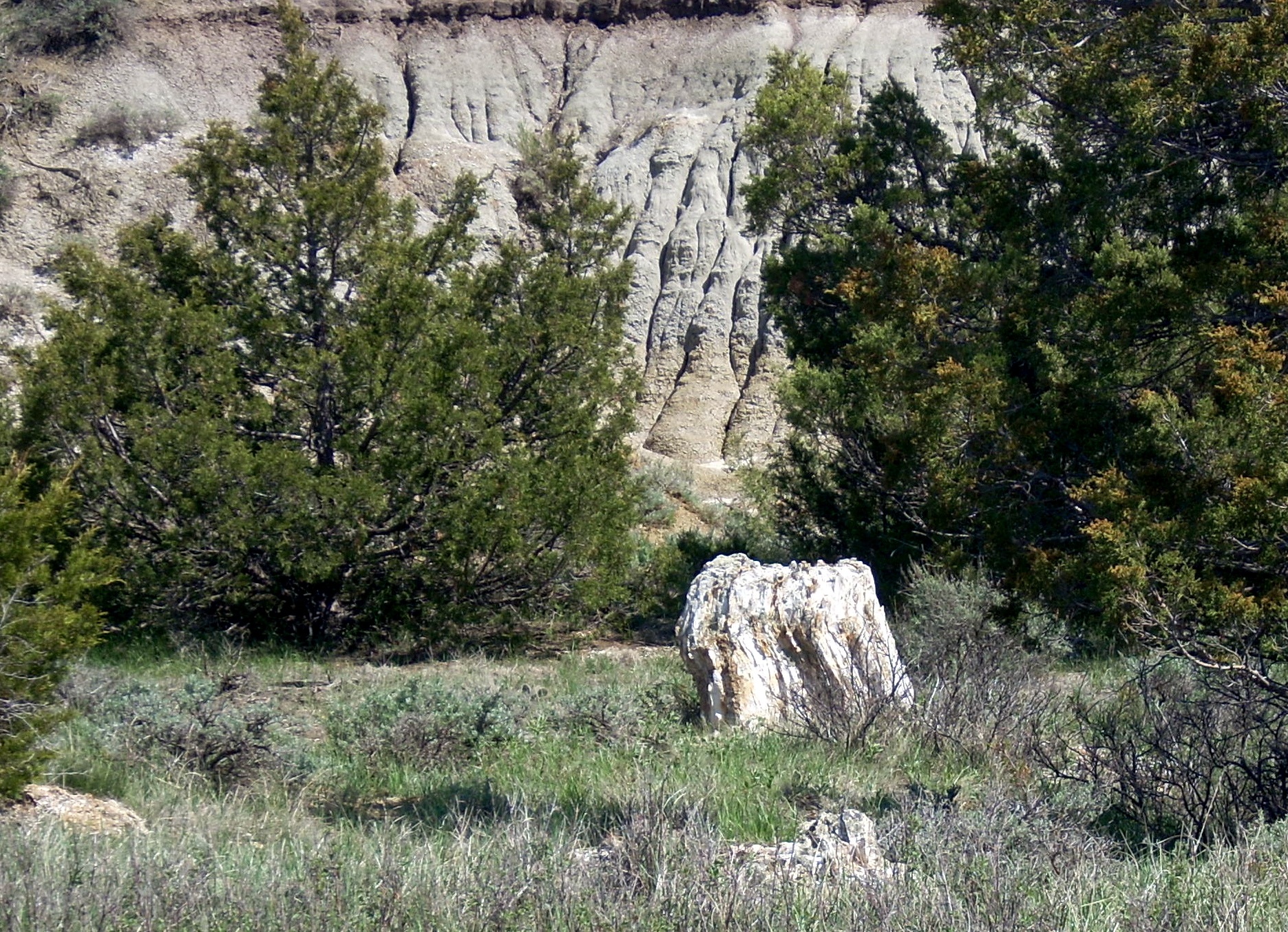 |
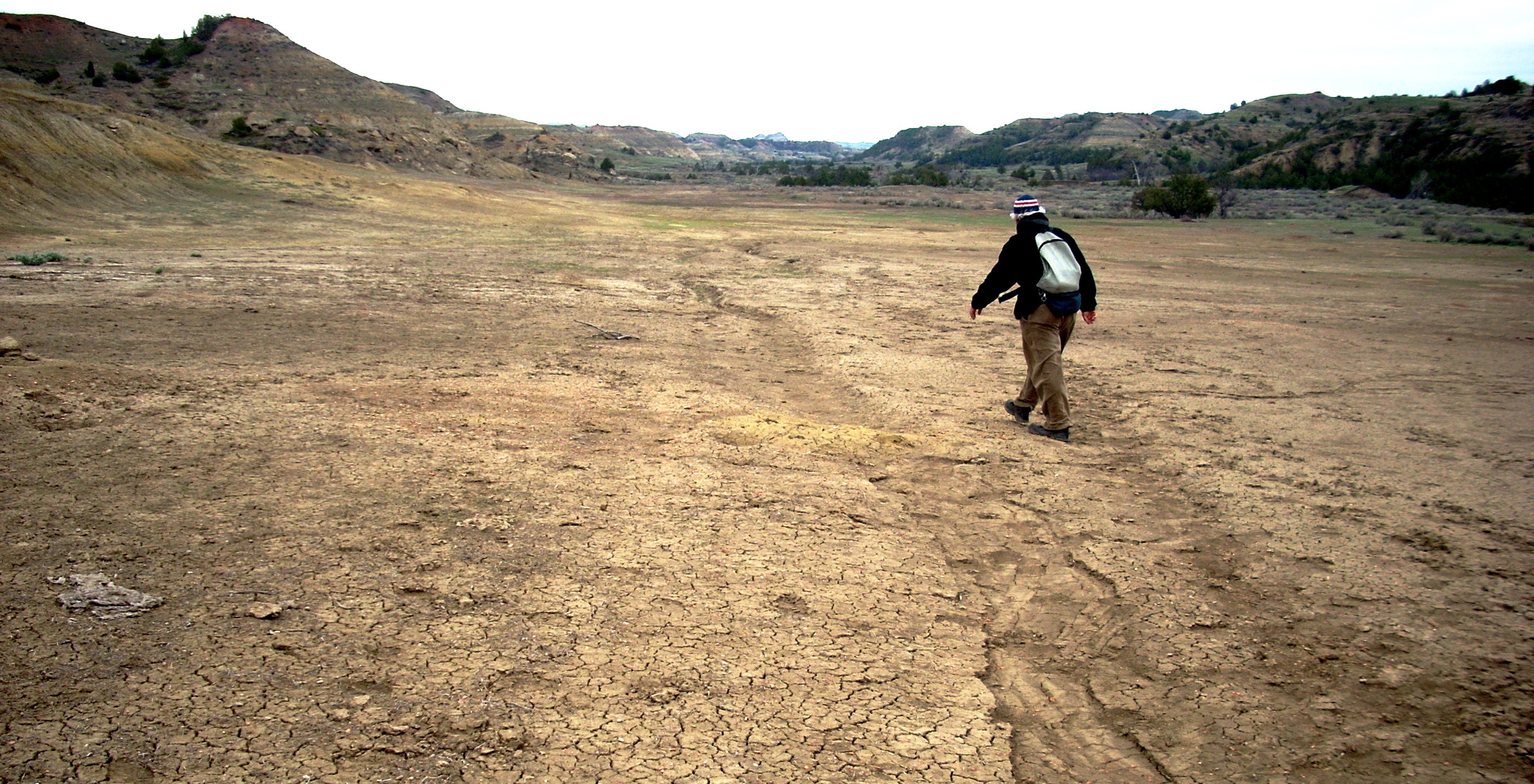 |
Further down the Paddock Creek Valley, you'll come to several of these bentonite mud flats. Your first reaction may be to consider them ugly and something to just get across as quickly as possible. But you need to stop, look around, and study the landscape. What you are seeing here is incredible. You're seeing living geology in action right beneath your feet. A few minutes of walking around and looking at this from different angles reveals that the whole landscape is slowly oozing downhill to the creek. We think of the buttes, mesas, ridges and other landforms as being fairly permanent; they may erode away eventually but it happens too slowly to notice. This landscape shows that's not true. It's actually happening at a pretty steady pace. Obviously, these landforms are big and will be here quite a while, but they are definitely eroding a lot faster than people realize. |
And there's more. As the trail swings down along Paddock Creek, you will pass several scenes like this one at right. The bentonite mud is engulfing these groves of trees along the creek. This is precisely what happened to those other trees. Thousands of years later the mud was eroded away, revealing clusters of petrified trees. So along this trail you can actually see paleobotany at work. However, this famous bentonite clay has a sinister side. When dry, it turns whitish gray and hardens like cement. When merely moist, it takes on a reddish orange hue and oozes slowly downhill. But when wet, such as for 48 hours after a rain, it becomes quicksand. You can easily sink in calf or knee deep and as you try to escape it will suck your boots right off your feet. Sun and wind dry it out fairly fast, but you cannot hike the Paddock Creek Trail the day after a heavy rain. |
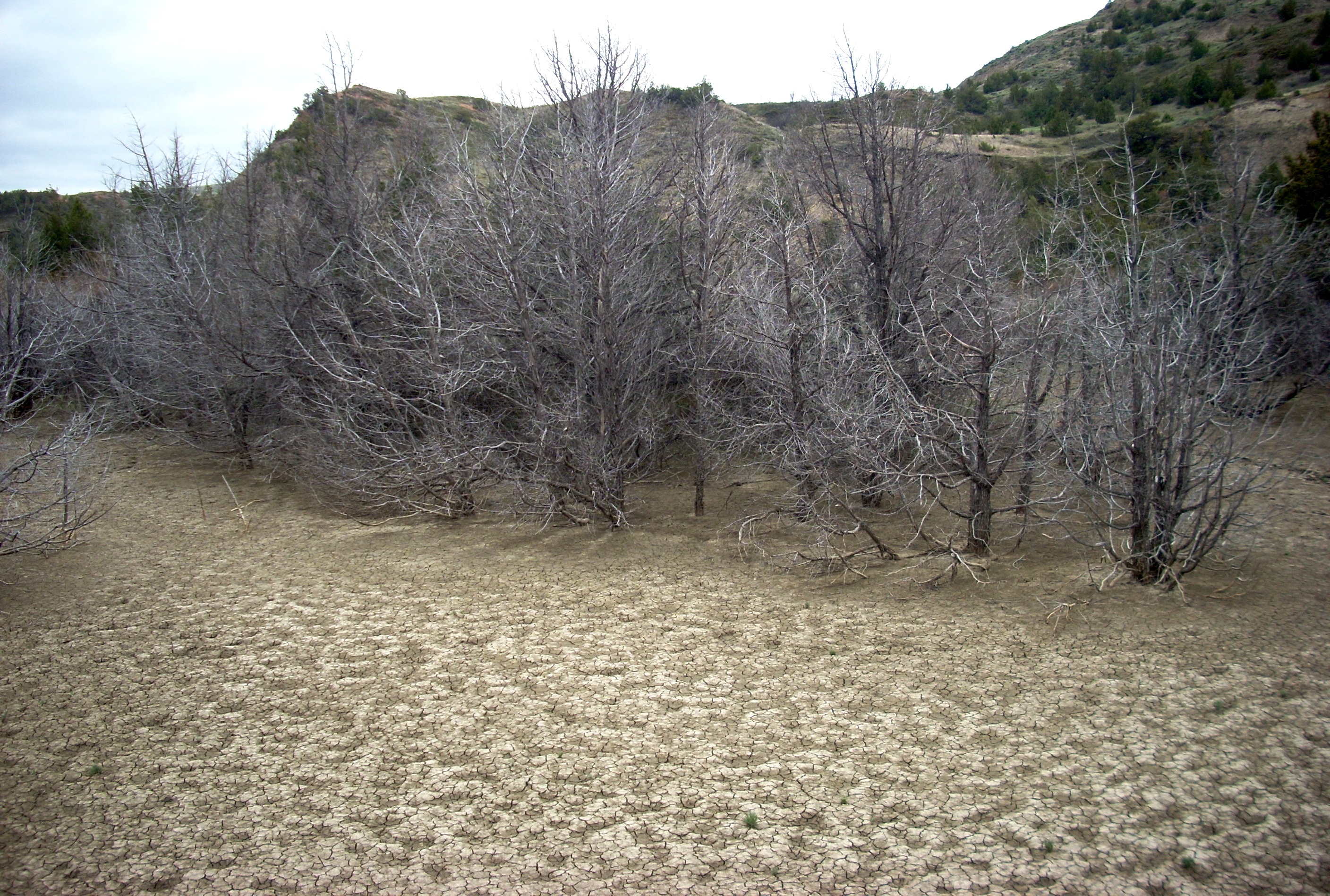 |
|
|||
|